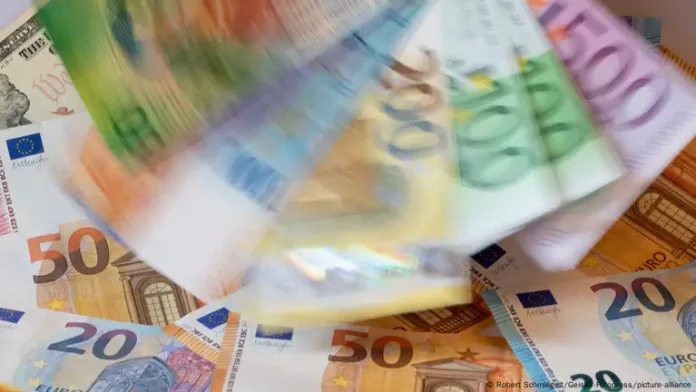The euro is rapidly gaining recognition as a safe haven currency in the face of growing economic uncertainty. In April, it rose by more than 8% against the US dollar—its strongest monthly gain in over two years. Investors are responding to shifting global economic conditions and policy decisions, particularly in the United States.
Economic instability drives demand for Euro
Nigel Green, CEO of deVere Group, explains, “The euro is becoming a stabilising force in real time.” He continues, “This isn’t a temporary rebound. Investors worldwide are strategically shifting away from US assets due to growing uncertainty.”
Trump’s tariff announcement on 2nd April triggered a major reassessment of economic risks. The EUR/USD exchange rate climbed from 1.05 to 1.1379, while the US Dollar Index (DXY) dropped 4.6%.
Analysts are now warning that the US faces a 50% chance of a recession. They cite unpredictable policies, supply chain disruptions, and declining consumer sentiment.
Structural forces driving the Euro’s rise
Green points out that US policy volatility is deterring investment. Meanwhile, Europe is showing renewed fiscal confidence. He adds, “Germany’s €500 billion stimulus plan and the European Central Bank’s interest rate cut are helping to boost growth and challenge Europe’s past image of austerity.”
Additionally, Europe’s trade surplus with the US is narrowing. This is reducing downward pressure on the euro and providing it with upward momentum.
European investors who hold foreign equity and bond positions are rethinking their investments in the US. Previously attracted by higher returns and the strength of the dollar, they are now scaling back due to softening earnings, growing fiscal deficits, and currency volatility. By contrast, the euro is becoming a safer bet.
Global capital flow shifting to the eurozone
There is clear evidence of a global shift in capital flows. “We’re seeing a noticeable movement away from dollar-denominated assets and towards the eurozone,” Green says. “This shift reflects concerns over the US’s economic future and a search for currencies supported by solid investments and clear policies.”
Markets are now factoring in not just slower growth in the US, but also increasing political and economic uncertainty.
Europe’s investment-led growth strategy
Europe’s focus on investment-led growth is also attracting new interest. This shift is reshaping the foreign exchange market and presenting new opportunities for those who pay attention to macroeconomic signals.
Green adds, “This goes beyond currency. It’s a clear sign that the world is reassessing risk, resilience, and return. Safe havens are no longer defined by history; they now depend on policy responses, structural strength, and clear leadership.”
For investors, both institutional and retail, the implications are significant. As Europe draws in more capital, the euro is increasingly acting as a counterbalance to dollar volatility. This shift offers new opportunities for portfolio diversification, with euro-denominated assets taking on a more central role in global strategies.
The Euro’s role in a changing economic landscape
Green notes that Trump may have hoped his tariffs would revive US industry and strengthen the economy. Instead, they have helped reposition the euro as a global safe haven. This shift is driven by structural changes, market psychology, and the growing importance of capital credibility.
As global volatility continues and political uncertainty rises, the euro’s role is becoming clearer. It is no longer just a regional currency; it is emerging as a safe haven in times of global economic adjustment.
